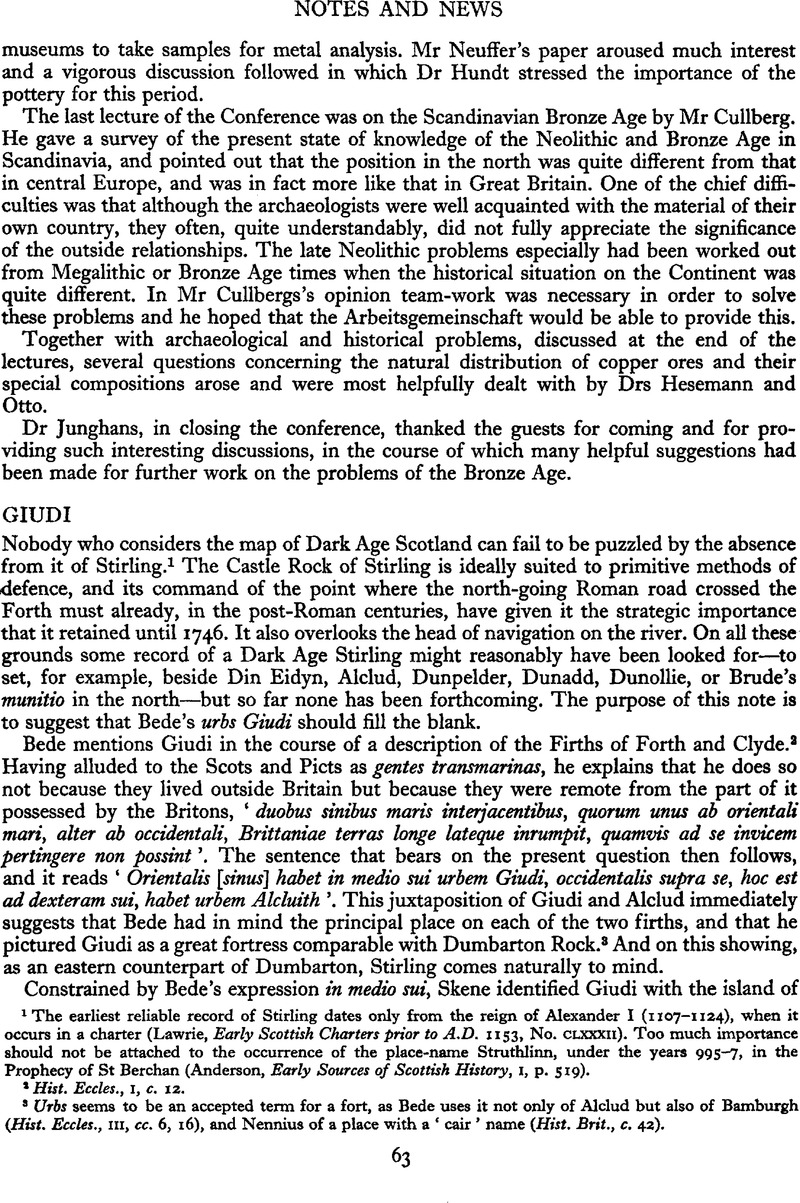Article contents
Abstract

- Type
- Notes and News
- Information
- Copyright
- Copyright © Antiquity Publications Ltd 1959
References
1 The earliest reliable record of Stirling dates only from the reign of Alexander I (1107–1124), when it occurs in a charter (Lawrie, Early Scottish Charters prior to A.D. 1153, No. CLXXXII). TOO much importance should not be attached to the occurrence of the place-name Struthlinn, under the years 995–7, in the Prophecy of St Berchan ( Anderson, , Early Sources of Scottish History, 1, p. 519).Google Scholar
2 Hist. Eccles., I, c. 12.
3 Urbs seems to be an accepted term for a fort, as Bede uses it not only of Alclud but also of Bamburgh (Hist. Eccles., m, cc. 6, 16), and Nennius of a place with a ‘ cair ’ name (Hist. Brit., c. 42).
4 Celtic Scotland, I, p. 71.
5 The Origins of Northumbria, p. 37; An Introduction to Anglo-Saxon England, p. 41, n. His argument is contained in the first of these two passages.
6 This is, for example, the invariable practice of unlettered persons exploring in the woods in Canada. Their plans show rivers running in straight stretches with tributaries entering at right angles, while lakes are neat circles or ovals.
7 Archaeologia, XCIII (1949), p. 34.
8 Hist. Brit., cc. 64, 65.
9 Archaeologia, loc. cit.
10 Loc. cit. This extremely obscure passage is discussed by Lot, , Nennius et l’Historia Brittonum, pp. 76 f. and 205, nn. 1, 2.Google Scholar See also Stenton, Anglo-Saxon England, pp. 83 f.
11 Stenton, loc. cit.; Bede, , Hist. Eccles., 3, c. 24.Google Scholar
12 Hist. Eccles., III, c. 24.
13 It is interesting to note that Lot thinks of Iudeu as ‘ le poste avancé de la Northumbrie contre les Pietés de l’extrême Nord et les Bretons de la vallée de la Clyde ’ (op. cit., p. 77, n. 1.).
- 1
- Cited by




